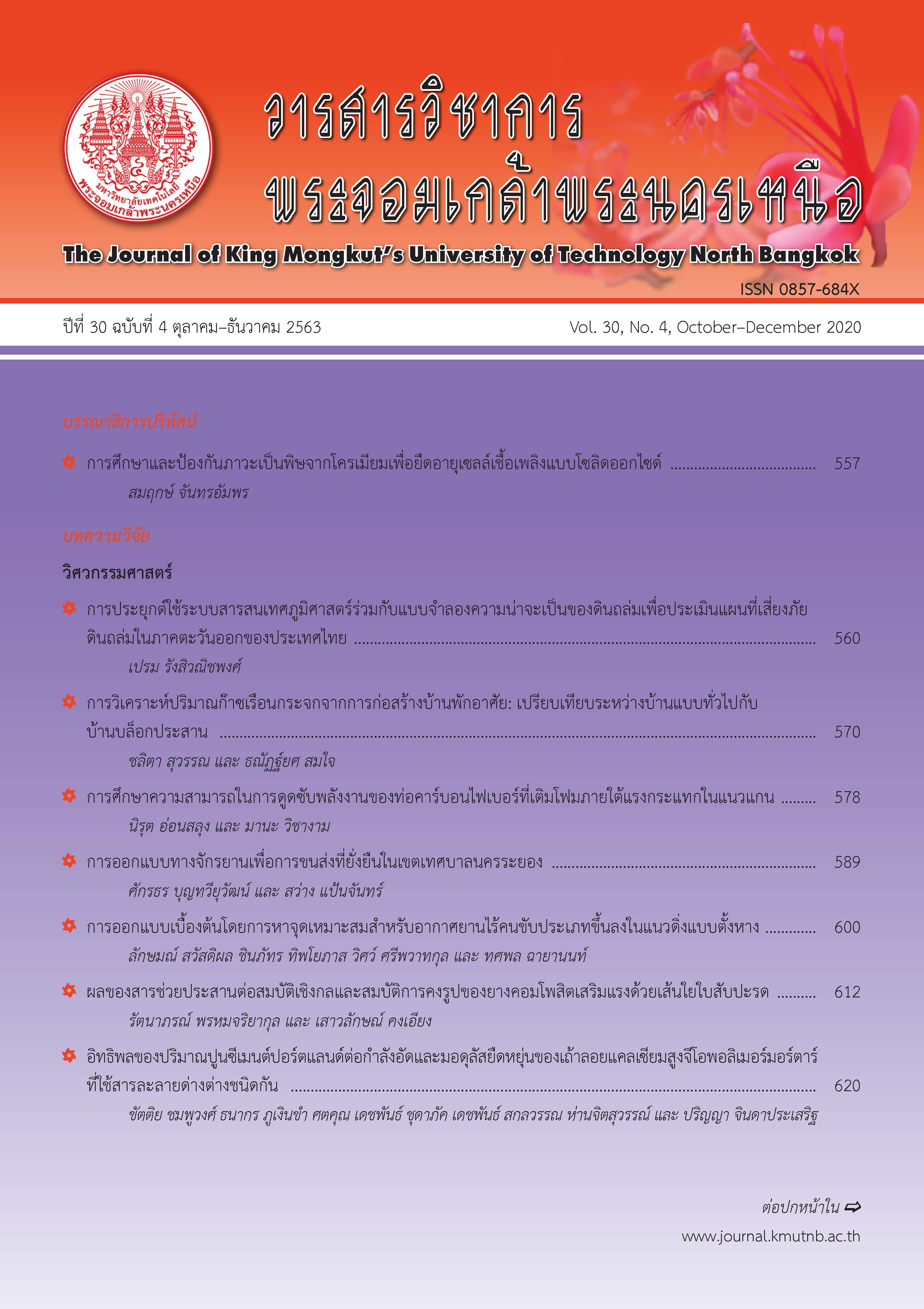การพัฒนารูปแบบศักยภาพของผู้ประกอบการในอุตสาหกรรมพลอยในยุคดิจิทัล
Main Article Content
บทคัดย่อ
การวิจัยครั้งนี้ใช้วิธีการวิจัยแบบบูรณาการวิจัยเชิงปริมาณและการวิจัยเชิงคุณภาพ โดยมีวัตถุประสงค์ของการวิจัยได้แก่ 1) เพื่อศึกษาระดับความสำคัญศักยภาพของผู้ประกอบการในอุตสาหกรรมพลอย และ 2) เพื่อสร้างรูปแบบศักยภาพของผู้ประกอบการในอุตสาหกรรมพลอย ประชากรกลุ่มตัวอย่างที่ใช้ในการวิจัย ประกอบด้วย 1) กลุ่มผู้ให้ข้อมูลในการสัมภาษณ์เชิงลึก ได้แก่ ผู้เชี่ยวชาญในด้านอุตสาหกรรมพลอย จำนวน 5 คน 2) กลุ่มผู้ตอบแบบสอบถาม ได้แก่ ผู้ประกอบการในอุตสาหกรรมพลอย จำนวน 470 คน 3) กลุ่มผู้ประเมินรูปแบบศักยภาพของผู้ประกอบการในอุตสาหกรรมพลอย ได้แก่ผู้เกี่ยวข้องกับอุตสาหกรรมพลอย จำนวน 9 คน เครื่องมือที่ใช้ในการวิจัย ได้แก่ แบบสัมภาษณ์เชิงลึกผู้เชี่ยวชาญด้านอุตสาหกรรมพลอย แบบสอบถามศักยภาพผู้ประกอบการในอุตสาหกรรมพลอย และแบบประเมินรูปแบบศักยภาพของผู้ประกอบการในอุตสาหกรรมพลอย การวิเคราะห์ข้อมูลจากการสัมภาษณ์ ใช้วิธีการวิเคราะห์เชิงเนื้อหา การวิเคราะห์ข้อมูลจากแบบสอบถามใช้วิธีการแจกแจงความถี่ ค่าเฉลี่ย ส่วนเบี่ยงเบนมาตรฐาน และการประเมินรูปแบบศักยภาพของผ้ปู ระกอบการในอุตสาหกรรมพลอยใช้การประเมินด้านความเที่ยงตรงเชิงเนื้อหา (Content Validity Ratio; CVR) ผลการวิเคราะห์ศักยภาพของผู้ประกอบการในอุตสาหกรรมพลอย พบว่า มีองค์ประกอบที่สำคัญในระดับมากที่สุด 4 ด้าน ได้แก่ 1) ด้านความรู้ความสามารถด้านอุตสาหกรรมพลอย 2) ด้านคุณลักษณะของผู้ประกอบการในอุตสาหกรรมพลอย 3) ด้านการบริหารงานในอุตสาหกรรมพลอย และ 4) ด้านพฤติกรรมของผู้ประกอบการในอุตสาหกรรมพลอย และการประเมินรูปแบบศักยภาพของผู้ประกอบการในอุตสาหกรรมพลอยจากผู้ทรงคุณวุฒิ พบว่า ค่าความเที่ยงตรงเชิงเนื้อหา (CVR) ในด้านความเหมาะสมของรูปแบบศักยภาพอยู่ที่ 1.0 โดยผู้ทรงคุณวุฒิทั้ง 9 คน เห็นชอบด้วยมติเอกฉันท์ในภาพรวมว่ารูปแบบศักยภาพของผู้ประกอบการในอุตสาหกรรมพลอยนั้น มีความเหมาะสม
Article Details
บทความที่ลงตีพิมพ์เป็นข้อคิดเห็นของผู้เขียนเท่านั้น
ผู้เขียนจะต้องเป็นผู้รับผิดชอบต่อผลทางกฎหมายใดๆ ที่อาจเกิดขึ้นจากบทความนั้น
เอกสารอ้างอิง
[2] P. Kanoklertwonges and V. Chandrarsorn, “The management of thai gems and jewelry business,” EAU Heritage Journal Social Science and Humanities, vol. 7, no. 3, pp. 331–340, 2017 (in Thai).
[3] Pemba Gems, (2017, February), Know the Truth about Jewelry, [Online]. Available: http://www.pembagems.com.
[4] V. Zamanzadeh, M. Rassouli, A. Abbaszadeh, H. Alavi-Majd, A. R. Nikanfar, and A. Ghahramanian, “Details of content validity and objectifying it in instrument development,” The Journal of Nursing Practice Today, vol. 1, no. 3, pp. 163–171, 2014.
[5] P. Thetbanthad, T. Boonyasopon, and P. Attavinijtrakarn, “A potential development framework for intermediate managers of the petrochemical industry,” The Journal of KMUTNB, vol. 30, no. 3, pp. 529–536, 2019 (in Thai).
[6] Th. Prasitthi-on, S. Samahito, and P. Sawasdikiat, “The executive competency development of sports industry,” Journal of Nakhornratchasima college, vol. 10, no. 2, pp. 165–180, 2016 (in Thai).
[7] T. Chatmaphanrungsi, C. Chotiwong, and S. Pinthapataya, “A study of important knowledge and skills of gynecologist,” Journal of Technical Education Development, King Mongkut’s University of Technology North Bangkok, vol. 31, no. 1, pp. 137–142, 2019 (in Thai).
[8] Th. Srisowanna, “Factors affecting gold and jewelry buyer satisfaction in Thailand,” M.S. thesis, Faculty of commerce and accountancy Thammasat university, 2017 (in Thai).
[9] K. Antonis, M, M. Van den Berg Peter, and P. M. Wilderom Celeste, “Managing employee empowerment in luxury hotels in Europe,” International Journal of Service Industry Management, vol. 18, no. 1, pp. 70–88, 2007.
[10] R. Anantakul, “Marketing mix factors and Thai people’s buying behaviour of Mynmar gems,” M.S. thesis, Global Business Management, Burapha University, 2017 (in Thai).
[11] V. Kaewpipat, “Factors influencing pearl purchasing in Phangnga province,” M.S. thesis, Rajamangala University of Technology Thanyabury, 2011 (in Thai).
[12] L. Altinay, M. Madanoglu, G. De Vita, H. Arasli, and Y. Ekinci, “The interface between organizational learning capability, entrepreneurial orientation, and SME growth,” Journal of Small Business Management, vol. 54, no. 3, pp. 871–891, 2016.

